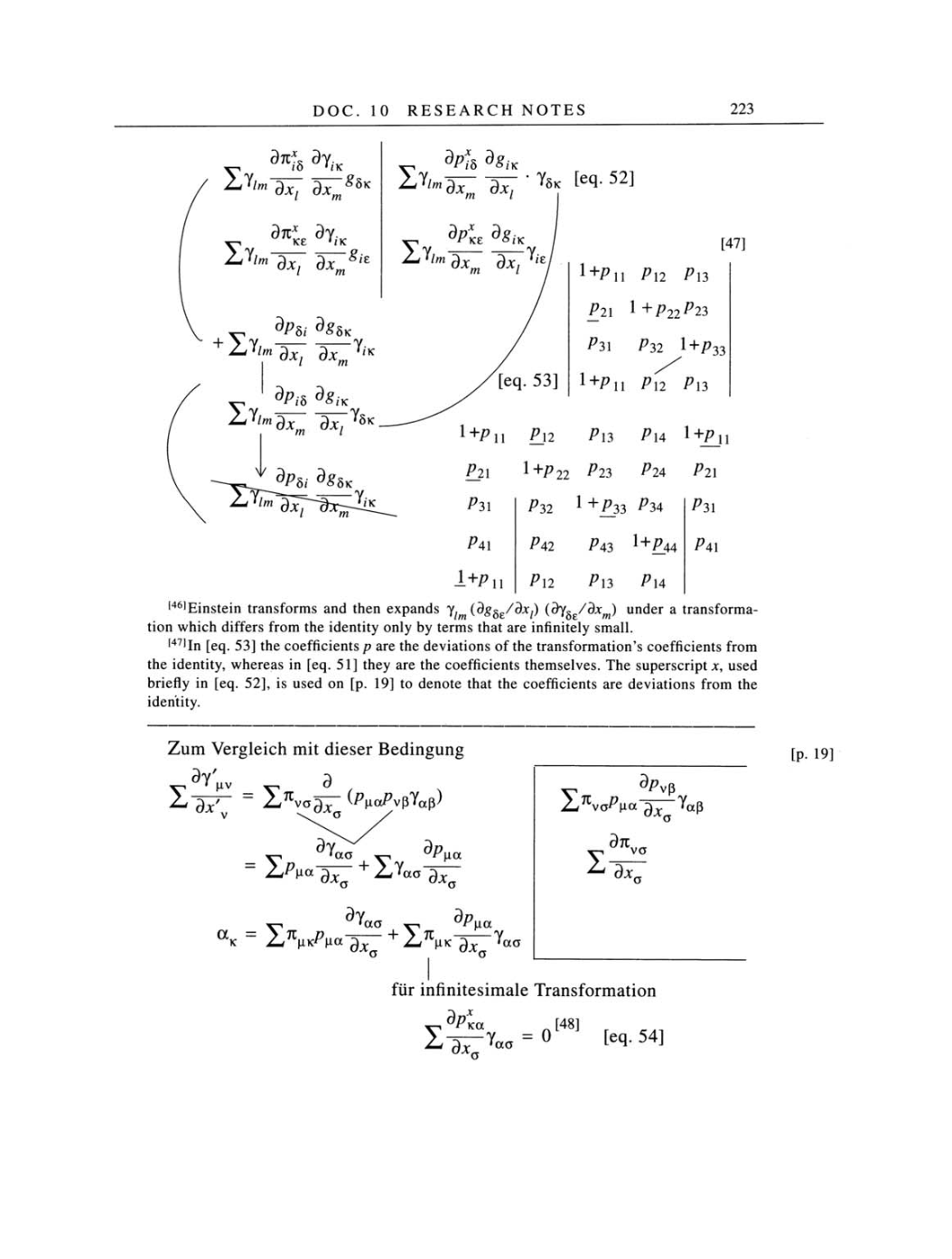DOC.
10
RESEARCH NOTES 223
v
dnJs 3Yk
5
a*,«
dx,
dxm§bK
It
'm
3;cm
dx,
' Ys*
[eq.
52]
^
dPXKe
dSiK
[47]
dx,
dxm
g
IE
I?,«.-
-Y;
1+/n
P12
P13
P21
l+/'22^23
+
IY'm
V.
dP&i
dx,
dsSk
dxm
Y'k
^31
P
32
I+P33
[eq. 53] 1+Pll
Pl2 P\3
It
dPiS d8iK
y*K lm
dxm
dxt
1+P11 Pj2 P13
/14
1+P
\f
dP5i d85K
P21
\+p22
P23
P24
P21
P31
P32
1 +P33 P34
P31
P41 P42 ^43
1+^44
P41
1+Pu
P\2
P13 ^14
[46]Einstein
transforms
and
then
expands
Ylm
(dyge/dxl)
(dyge/dxm)
under
a
transforma-
tion which differs from the
identity
only by
terms
that
are
infinitely
small.
[47]In
[eq.
53]
the coefficients
p
are
the deviations of
the transformation's coefficients from
the
identity,
whereas
in
[eq.
51] they
are
the coefficients
themselves. The
superscript
x,
used
briefly in
[eq.
52],
is
used
on [p. 19]
to
denote that the coefficients
are
deviations from the
identity.
Zum
Vergleich
mit
dieser
Bedingung
JL
dx' Ajnvc^x
(P\LaPvpyap)
[p.
19]
^ao
^P\ia
=
I^v«
+
It
a
aG
dx
Y^
^ao
^
^|ia
aK =
lVVar
+
IIcl.-
y»ao
uk
o
*Pvß
X^va^Va
^aß
Ö7C
I
vö
3A:G
für infinitesimale
Transformation
dp
I-=
KCL
0'[48]
'
[eq.
54]
3jc
,aG
